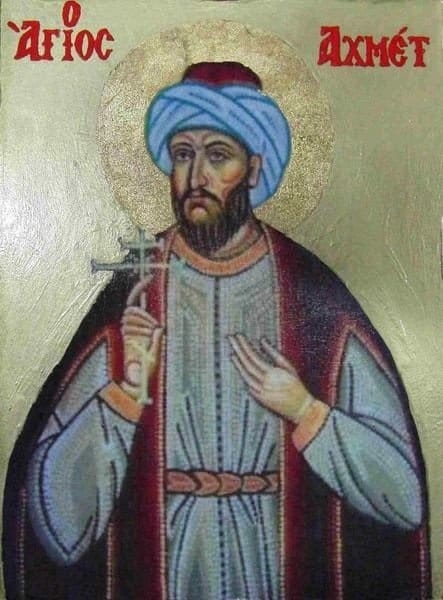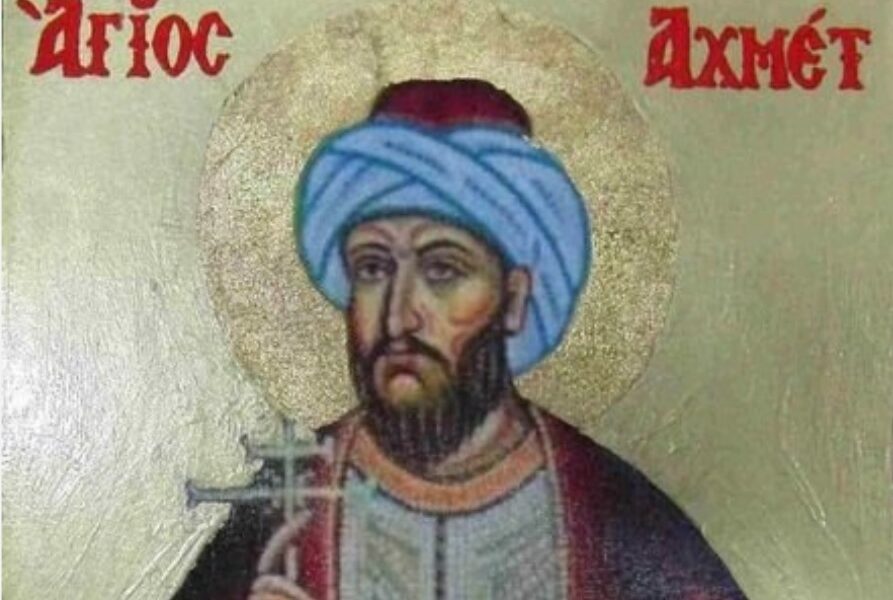Ahmet the Calligrapher was born in the seventeenth century to a Muslim family in Constantinople but died as a Christian Orthodox martyr on May 3, 1682.
Since he did not have a wife and in accordance with Ottoman law, he had a concubine instead, a Christian Orthodox woman from Russia. Another captive, also from Russia, lived together with her and Ahmet. The second slave was an old woman.
Both these women were very pious Christians.
On feast days, Ahmet would permit the old woman to go to church. Taking the blessed bread or antidoron from the church and back to the house, she would give it to the young woman to eat. The old woman would also bring her holy water to drink.
Whenever this occurred and Ahmet was close to her, he would smell a beautiful and indescribable fragrance coming out of her mouth. He would ask her what she was eating to make her mouth smell so fragrant.
Not realising what was happening, the slave would say that she was not eating anything. However, he persisted in asking.

Eventually she told him that she was eating the bread which had been blessed by the priests, which the old woman brought her whenever she returned from church.
On hearing this, Ahmet was filled with longing to see the Orthodox church and how the bread was received. He summoned a priest and told him to prepare a secret place for him in the church during the Liturgy.
When the appointed day arrived, dressed as an Orthodox Christian, he went to the Patriarchate and followed the Divine Liturgy. While he was in church, he saw the Patriarch shining with light and lifted off the floor, as he came out of the altar and through the holy doors to bless the people.
As he blessed, rays of light came from his finger tips, but though the rays fell on the heads of all the Orthodox Christians, they did not fall on Ahmet’s head. This happened two or three times and each time Ahmet saw the same thing.
Thus, Ahmet came to the Christian faith. Without hesitation he sent for the priest, who gave him rebirth through baptism. Ahmet remained a secret Christian for some time, concealing his baptismal name, which is why it has not come down to us.

However, one day Ahmet and certain noblemen were eating together. Afterwards they sat talking and smoking, as is the Muslim custom. In the course of the conversation they began to discuss what the greatest thing in the world. Each gave his opinion.
The first guest said that the greatest thing in the world was for a man to have wisdom. The second maintained that woman was the greatest thing in the world. And yet a third said that the greatest thing in the world, and by far the most delightful, was good food.
Then it was Ahmet’s turn. They all turned to him, asking him for his opinion on this matter. Filled with holy zeal, Ahmet cried out that the greatest thing of all was the Faith of the Orthodox.

And confessing himself to be a Christian, he boldly censured the falseness and deception of Islam. At first, on hearing this the Muslims were aghast.
Then, filled with unspeakable rage, they fell on him and dragged him to a judge, so that he could be sentenced to death. After torture and a few chances to return to Islam, he was subsequently beheaded on May 3 1682, receiving the crown of martyrdom.
According to St Nicodemus the Hagiorite, his memory is celebrated on December 24th.
For this, he was put before the Sultan and qadi. After torture and a few chances to return to Islam he was subsequently beheaded on 3 May 1682.
READ MORE: Panos Meintanis was a Klepht and Greek rebel (1643 - December 24, 1700)


